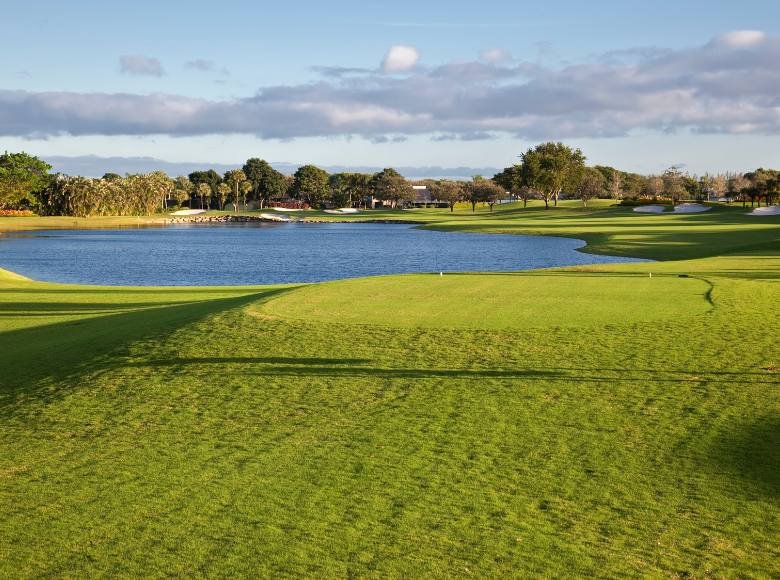To effectively prevent and control diseases in Florida golf courses during the summer, it is crucial to implement proactive measures, employ suitable cultural practices, maintain regular monitoring, and utilize targeted disease control strategies.
Maintaining robust and disease-free turf on Florida golf courses is pivotal for offering golfers excellent playing conditions and preserving the allure of the landscape. As a leading provider of golf course services in Florida, DTE Golf ® understands the challenges confronted by golf course superintendents during the summer months.
In this article, we will delve into effective disease prevention and control strategies tailored for Florida course maintenance. With an emphasis on proactive measures, appropriate cultural practices, and regular monitoring, our objective is to assist golf course managers in ensuring optimal turf health and an outstanding golfing experience.
Understanding Turf Diseases in Florida Golf Courses
Florida’s warm and humid climate fosters an environment conducive to a variety of turf diseases. Common summer diseases found on Florida golf courses include dollar spot, brown patch, Pythium blight, and gray leaf spot. Recognizing the symptoms and understanding the environmental triggers of these diseases is critical for efficient disease management and prevention.
Proactive Measures for Disease Prevention in Florida Golf Courses
1. Irrigation Management: Optimize irrigation practices to avoid overwatering and excessive leaf wetness, which can foster disease development. Adjust irrigation schedules based on weather conditions and consider morning watering to allow turf to dry before evening.

2. Regular Mowing Practices: Maintain the recommended mowing height for each turfgrass species to stimulate healthy growth and deter disease. Utilize sharp blades and avoid mowing during wet conditions to minimize stress and inhibit disease spread.
3. Balanced Fertilization: Implement a comprehensive fertilization program tailored to the specific nutrient requirements of the turfgrass. A well-nourished and harmoniously fertilized turf is better equipped to resist disease and recover from stress.
4. Aeration and Overseeding: Regularly aerate turf areas to enhance soil drainage, reduce thatch buildup, and promote root development. Overseed thin or damaged areas to maintain turf density and competitiveness against diseases.
5. Monitoring and Early Detection: Consistent monitoring of turf areas is indispensable for early disease detection. Train staff to identify disease symptoms and establish a system for reporting and recording observations. Acting swiftly upon the initial signs of disease can impede further spread and minimize damage.
6. Proper Disease Identification and Diagnosis: Accurate disease identification is pivotal for the implementation of effective control measures. Consult turfgrass specialists or plant pathologists to confirm the presence of diseases and determine the most appropriate treatment options.
Targeted Disease Control in Florida Golf Courses
1. Fungicide Applications: When necessary, apply targeted fungicides based on disease type, timing, and turfgrass species. Seek guidance from experts to select suitable fungicides for effective disease management.
2. Cultural Practices: Implement cultural practices such as proper fertilization, irrigation, mowing, and aeration to create an environment that discourages disease proliferation.
3. Integrated Pest Management (IPM) Approach: Adopting an IPM approach fosters sustainable disease management. This involves combining diverse control strategies, including cultural practices, biological controls, and chemical treatments, to curtail disease impact while minimizing environmental risks.
4. Education and Training: Continued education and training for golf course staff are pivotal for disease prevention and control. Stay updated on the latest research, industry best practices, and emerging disease threats. Engage in educational programs and seminars to enhance disease management knowledge and skills.
5. Collaboration and Networking: Forge partnerships with other golf course professionals, superintendents, and industry experts to exchange experiences, ideas, and insights. Networking opportunities provide valuable knowledge about disease management techniques specific to Florida’s distinctive golf course environments.
Disease prevention and control in Florida golf courses during the summer necessitate proactive measures, appropriate cultural practices, regular monitoring, and targeted disease control strategies.
DTE Golf® is dedicated to supporting golf course managers with expert guidance, comprehensive services, and an unwavering commitment to Florida Course Maintenance. Together, we can ensure robust and vibrant turf, delivering exceptional playing conditions for golfers and upholding the splendor of Florida’s golf courses. Contact us to know more about our services.
